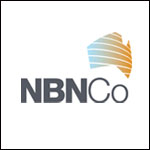 October is traditionally the month when the streets of Beijing fill with cabbages. Everywhere truck loads of them are being shipped into the city and distributed to the population who eagerly take them home and squirrel them away. Large stockpiles can be seen on balconies, pavements and against walls covered by makeshift tarpaulin. To the observer it is difficult to know whether to smile or panic about this sudden, well executed, cabbage invasion in a city of 17m people.
October is traditionally the month when the streets of Beijing fill with cabbages. Everywhere truck loads of them are being shipped into the city and distributed to the population who eagerly take them home and squirrel them away. Large stockpiles can be seen on balconies, pavements and against walls covered by makeshift tarpaulin. To the observer it is difficult to know whether to smile or panic about this sudden, well executed, cabbage invasion in a city of 17m people.
When Kevin Rudd announced the National Broadband Network it was positioned as caviar rather than cabbage, but the questions and challenges are remarkably similar. What is it all going to be used for? How to roll it out to a country of 21m people? Who’s going to pay for it? How will this affect the existing market?
Executive Summary
The National Broadband Network (NBN) has the potential to unleash a wave of new high tech services to Australians, and turn the existing telecoms sector on its head. The enormity of the change will depend on exactly what the NBN sells and how it is priced. This paper discusses these topics and concludes that the best interests of Australians won’t be served by the existing major players getting their own way.
Section 2 of the paper lists 12 lessons from other wholesale markets that are relevant to NBN commercial design.
(This paper was originally published on 25th August 2009)